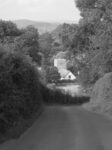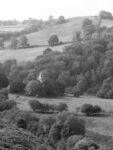Bob Trubshaw unearths a more time-honoured terminology for earth mysteries research
Should readers of Northern Earth be referred to as ‘earth mysterians’? Or as ‘neo-antiquarians’? Or what? Like Molière’s bourgeois gentilhomme, who discovers rather late in life that he has been speaking prose all along, it seems we have always been chorographers. No, not telling people how to dance around – this is not a mis-typing of ‘choreographers’. Choros is the Greek word for ‘place’ or ‘region’.
Ptolemy (circa AD 100-170) was seemingly the first chorographer, although he may have been influenced by a short work written by Pomponius Mela around AD 43. William Camden (1551–1623) was in turn influenced by Ptolemy and referred to himself as a chorographer – although later generations instead deemed him to be a pioneer antiquarian. Camden also emulated the work of John Leland (1503–52) whose Itinerary set the precedent for studying the local history of England on a county-by-county basis.
As Wikipedia puts it, “Camden’s Brittania is… a work of chorography: a study that relates landscape, geography, antiquarianism, and history”. Camden brought together on-the-spot physical descriptions of places with relevant historical texts. He was astute enough to recognise that ‘ancient monuments’ could be differentiated into pre-Roman, Roman and later eras. Above all, he was able to discern what Michael Wood has termed “the givenness of the past… still discernible in the landscape”,1 a specific sense of past-and-place which went on to inspire generations of antiquarians and tourists to travel. Nowadays we forget that such journeys were once a curiously English pastime.
There is also a more narrow sense of chorography. It fills the gap between ‘topography’ and ‘geography’. At least, if we take the strict sense of topos, choros and geos into account. To ancient Greeks, topography was the study of a specific place – modern counterparts would include guidebooks to prehistoric sites, churches and stately homes, or even a village history. In contrast, geography was the study of the Earth. Or at least the Earth as understood by an ancient Greek – so, effectively, the study of the Greek empire. The ‘barbarians’ on the edge of that empire barely got a look in. So in practice the Greek word ge made little distinction between the Earth, a land or a country. Ge is also the root of Gaia, the Greek’s personification of the ‘earth’ (as distinct from heaven or sea).2
 The modern parish church at the hamlet of Disserth, Radnorshire, by the banks of the River Ithon not far from the confluence with the Wye. Founded in the 7th century, the remote valley location was deliberately chosen as the place-name means ‘desert’ or wilderness. (BT)
The modern parish church at the hamlet of Disserth, Radnorshire, by the banks of the River Ithon not far from the confluence with the Wye. Founded in the 7th century, the remote valley location was deliberately chosen as the place-name means ‘desert’ or wilderness. (BT)
So between topography (initially, at least, the study of specific places) and geography (with the sense of studying entire countries or the whole Earth) Ptolemy looked more specifically at the regions in between. And it is this sense of looking at something bigger than a place but smaller than a country which ‘earth mysterians’ have been best at (while acknowledging that considerable place-specific research has been done, along with some larger-scale investigations). After all, Watkinsian ley-hunting is all about taking specific places and seeing them ‘chorographically’. Pioneering books from the 1970s, such as Janet and Colin Bord’s Mysterious Britain, are nothing if not chorographical studies, albeit structured around folkloric ‘themes’.
Individual earth mysterians often research specific counties. This is an all-but inevitable consequence of documentary sources and official record offices being organised according to counties. As Leland and Camden recognised, they are optimal for chorographical studies.
What have academics made of chorography? Not a lot, if printed sources are to be believed. Mark Gillings is author and co-author of two articles which explicitly discuss chorography; these appeared in 2007 and 2011. The first3 has the title ‘Chorography, phenomenology and the antiquarian tradition’ and is almost a history of ideas, setting the 1990s ‘fashion’ for phenomenological approaches to prehistory as a successor to Ptolemy, Leland and Camden. Gillings regards William Lambard’s Perambulation of Kent (mostly written in 1570) and William Dugdale’s Antiquities of Warwickshire (published 1656) as the ultimate exponents of 16th and 17th-century chorography.
These ideas underlie the second article, co-authored with Catherine Frieman.4 This challenges the phenomenologists’ assumptions that experiencing a place is mostly about viewing and seeing. About ten years ago, the academic archaeological literature was seemingly awash with GIS-generated ‘viewsheds’, often augmented with photographs taken from, say, specific examples of rock art or a prehistoric monument. But what about all the other ways of perceiving and experiencing? In the days when most settlements were farming villages, the smell of smoke and muck heaps would have heralded their proximity to travellers. The sounds of dogs, poultry, livestock, tools being used, as well as people calling out to each other, also travel beyond the confines of the buildings.
Frieman suggests that the sound of church bells ‘defined’ early Christian land units. Recent research, summarised and developed by myself in a work called Minsters and Valleys,5 reveals that such land units often corresponded to specific parts of valleys, which would both reflect and contain the sound of large bells. So, should medievalists be using GIS to construct ‘sound sheds’ rather than ‘view sheds’?

The church at Cefnllys, Radnorshire, sits in a loop of the River Edw. The photograph was taken from the steep footpath which forms the only land access. This church was also founded in the 7th or 8th century, conforming to a widespread preference for valley- bottom locations at the time. (BT)
Overall, different ways of experiencing places are just one more level of a complex chorographical ‘cake’ which takes in the full span of material culture (monuments, burials, occupation sites and more portable objects), the fixity or otherwise of settlements, changes in food sources, and the geographical scope of socio-political processes. The evidence may be as diverse as soil samples, documentary evidence, place-names and the specific topography of sites.
On the one hand, academics are getting better at integrating such specialisms. On the other hand, earth mysterians, long accustomed to straddling such distinctions, need to be aware that specialist evidence has not only been produced in prodigious amounts in recent decades, but the interpretation of it has come on in leaps and bounds. The congenial fuzziness of ‘landscape archaeology’ as instigated in the 1970s has now gained more solid foundations.6
The richness and rigour of academic research combined with the abilities of ‘alternative’ archaeologists to regard the topography of places as valuable evidence in its own right – and a propensity to straddle disciplinary divides – creates an approach which Ptolemy, Leland, Camden and other pioneers would be proud of – a ‘neo-chorography’.
Notes
- Michael Wood, The Story of England. Viking 2010, p11.
- Susan Alcock and Robin Osborne (eds), Placing the Gods: Sanctuaries and sacred space in ancient Greece, Clarendon 1994.
- Mark Gillings, 2011. ‘Chorography, phenomenology and the antiquarian tradition’. Cambridge Journal of Archaeology 21(1): p53–64.
- Catherine Frieman and Mark Gillings, 2007. ‘Seeing is Perceiving?’. World Archaeology 39(1): p4–16.
- Bob Trubshaw, Minsters and valleys: A topographical comparison of seventh and eighth century land use, Heart of Albion, 2015; free-to-download PDF available online at www.hoap.co.uk/general.htm#m&v
- See Andrew Fleming, ‘Landscape archaeology and British prehistory: questions of heuristic value’, in A.M. Jones, J. Pollard, M.J. Allen & J. Gardiner (eds), 2012, Image, Memory and Monumentality: Archaeological engagements with the material world,. Oxbow Books/Prehistoric Society Research Paper 5.
Published in NE144, March 2016, pp.12-14
https://northernearth.co.uk/subscription/